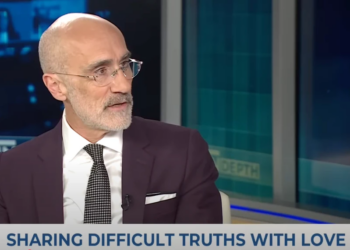Emma Revell is External Affairs Director at the Centre for Policy Studies.
ConservativeHome readers do not need to be told that Britain has a housing crisis.
Whether it’s the fantastic work of think tankers (including my own colleagues) or activist groups like Conservative YIMBY, these pages have been filled with countless articles making the case that home ownership is a fundamental conservative value. As such, backing housebuilding is critical not just to the future of the country, but to the future of the Tories.
But what should preface all of this is a clear and accurate understanding of the scale of the problem. That is why my colleague Ben Hopkinson, the new Head of Housing and Infrastructure at the Centre for Policy Studies, decided to crunch the numbers. Unfortunately, but perhaps unsurprisingly, they make for grim reading.
Taking into account the most accurate and complete data sets, which run up to 2023, the UK has approximately 30.4 million homes, housing a population of around 68.2 million people. That is 446 homes per 1,000 people. Among comparable European countries, that places us second bottom, with only Ireland having fewer homes per 1,000 people. The Italians top the chart, with 598 homes per 1,000. France has 560, Germany 516, and Norway 488.
To work out how far behind we really are, the CPS took a weighted average of similar European countries, which results in an average of 542 homes per 1,000. To meet this ratio, the UK would need an additional 6.5 million homes. England accounts for 5.85 million of the shortfall.
The houses we do have are also much smaller than those occupied by our European neighbours. Not only do the French have more homes per capita than us, having expanded their housing stock by an average of 1.1% per year over the past four decades compared to our 0.8% growth, but their homes are larger too. The average French property is roughly 1,200 square feet or 111 m2, compared to an average of just 1,000 sq ft (94m2) in the UK.
The disparity between the UK and the Continent has been made greater by rapid population growth in recent years, fueled by record immigration – although some politicians, including Housing Secretary Angela Rayner, are reluctant to draw any link between migration and the housing shortage. This is woefully naive. As previous CPS research has pointed out, migrants may bring skills to this country but they cannot bring a mile of road, a new GP surgery or a house. In the years 2021-2023, the peak of the recent migration wave was so high that despite expanding the housing stock in England by 470,000 homes, the number of homes per head actually fell.
However, we should not seek to put the weight of the housing crisis entirely on our failure to tackle immigration, as other parties on the right may wish to do. This would be equally as naive.
If instead of mass migration, net migration had remained in the “tens of thousands” (to quote David Cameron) since 1997, the level we last saw before Tony Blair took office, and housebuilding had kept the same rate, England would have roughly 475 homes per 1,000 people. That is an improvement over the current rate, but only covers about a third of the overall housing shortage. Even under this improved scenario, England would sit as the third worst major European country in terms of homes per capita.
Clearly migration is contributing to our housing shortfall, but we should robustly challenge those who claim fixing our migration crisis would also fix our housing one, not least because even if we were to magically get to net zero migration overnight, the 6.5 million shortfall would remain. Housing and immigration need to be addressed urgently and separately – immigration cannot be used as a smokescreen behind which Nimbys are allowed to hide.
Frankly, a 6.5million housing shortfall is a little terrifying. The planning system is broken, with any development – even the very smallest – taking too long to get signed off, if indeed it ever does. The cost of getting a project through the planning stage is spiralling, pushing small and medium size developers out of business in some areas. Britain also has a skills shortage, with some people fearing we don’t have enough brickies and plasterers to build hundreds of thousands homes a year even if we tried.
But we must try.
Our new calculations, alongside the Office for National Statistics projection that the UK will see long-run migration settle at around 340,000 per year, means that in order to eliminate our housing shortage by 2040 we should be aiming for 565,000 new homes a year. That would mean more than doubling the rate at which we increase our existing housing stock to 1.9% a year.
A challenge, for sure, but this has happened before. During the interwar period, England and Wales expanded their housing supply by an average of 2.3 per cent a year, peaking at 3 per cent in 1936.
London is particularly ripe for improvement. Not only is it where the need is most acute and the benefits of more housing most beneficial, it also has an abominable recent record that could be readily improved. In the first three months of this year, 23 of London’s 33 boroughs reported zero new housing starts. According to residential development consultant Molior, just 1,210 homes were begun in only 10 London boroughs, against a government target of 88,000 new homes across the capital this year. In what CPS Director Robert Colvile recently called “a national emergency and national scandal”, only 3,661 affordable homes were started under London’s affordable housing programme in the year to March 2025, despite Sadiq Khan receiving £4.1 billion in central government funding for the programme overall.
On its current course, England won’t reach the European average homes per capita under 2115, and that is assuming no one else improves their housebuilding rates.
Either we look back 90 years and take inspiration from a time when Britain could actually build things, or we condemn ourselves to spending the next 90 living in smaller, ever more expensive houses, and watching the conservative dream of a home-owning democracy slip away.
No one is saying it will be easy, but the country is doomed if we don’t even try. As is the Conservative Party.


![Man Arrested After Screaming at Senators During Big Beautiful Bill Debate [WATCH]](https://www.right2024.com/wp-content/uploads/2025/06/Man-Arrested-After-Screaming-at-Senators-During-Big-Beautiful-Bill-350x250.jpg)














